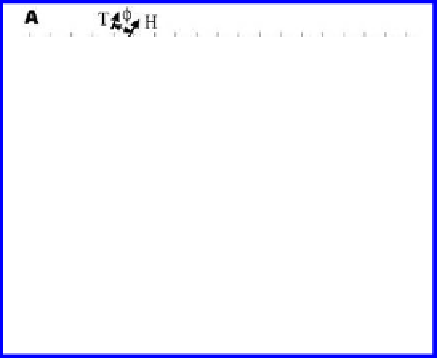Biomedical Engineering Reference
In-Depth Information
7.2 BIOSENSOR
CNTs have many novel electronic properties, which have profound value for
further developing them into functional devices. The applications of CNTs in
the areas of chemical/biological analysis and sensing are strongly based on
these properties.
7.2.1 Structure and Electric Properes of CNTs
The structure of CNTs can be thought of as seamless cylinders wrapped up
from graphitic sheets with a hexagonal lattice.
1
As shown in Fig. 7.1, to make
two equivalent sites of the hexagonal lattice coincide, the wrapping should
follow the vector
C
, which deines the direction of the wrapping and relative
position of the two sites. A pair of integers (
n
,
m
) is often used to describe the
vector
C
. For example, Fig. 7.1 shows the formation of an (11, 7) CNT. With
different values of
n
and
m
, the structure of CNTs can be grouped into three
types. CNTs are “armchair” tubes when
n
equals
m
, and “zigzag” tubes in case
n
equals 0. Other CNTs belong to the “chiral” type, with the
ϕ
between 0° and
30°.
3
The electronic properties of CNTs are critically dependent on the tube
structure indices (
n
,
m
). Wilder and collaborators
3
found that when
n
=
m
or
n
-
m
= 3
l
(where
l
is an integer), the CNTs are metallic. If
n
-
m
≠ 3l, the CNTs
are semiconducting. This correlated with the study of Odom's
group,
4
which
described the providence of being semiconducting as (2
n
+
m
)/3 being an
integer.
Figure 7.1
Wrapping of a graphite sheet to form a CNT. The wrapping vector
C
determines the structure of the formed CNT. The CNT is armchair tube when
ϕ
= 0°
(
n
=
m
), zigzag tube when Φ = 30° (
n
= 0), and chiral type when 0 <
ϕ
<30°. Redrawn
from Wilder
et al.
3
.






Search WWH ::

Custom Search